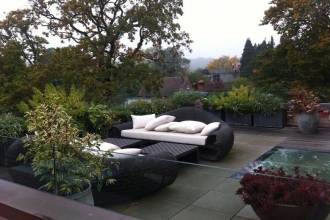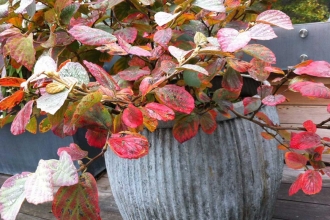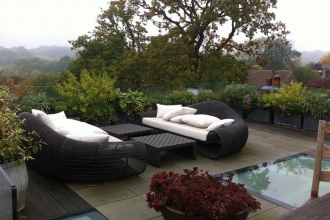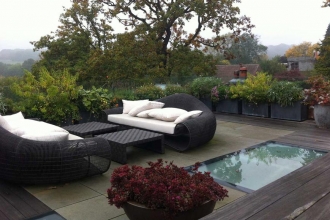A roof garden is any garden on the roof of a building. Besides the decorative benefit, roof plantings may provide food, temperature control, hydrological benefits, architectural enhancement, habitats or corridors for wildlife, and recreational opportunities. The practice of cultivating food on the rooftop of buildings is sometimes referred to as rooftop farming. Rooftop farming is usually done using green roof, hydroponics, aeroponics or air-dynaponics systems or container gardens.
For those who live in small apartments with little space, square foot gardening, or (when even less space is available) living walls (vertical gardening) can be a solution. These use much less space than traditional gardening (square foot gardening uses 20% of the space of conventional rows; ten times more produce can be generated from vertical gardens). These also encourage environmentally responsible practices, eliminating tilling, reducing or eliminating pesticides, and weeding, and encouraging the recycling of wastes through composting.
A green roof or sedum roof is a roof of a building that is partially or completely covered with vegetation and a growing medium, planted over a waterproofing membrane. It may also include additional layers such as a root barrier and drainage and irrigation systems. Container gardens on roofs, where plants are maintained in pots, are not generally considered to be true green roofs, although this is debated. Rooftop ponds are another form of green roofs which are used to treat greywater.
Whatever the space available we can plan, build, plant and maintain your roof oasis. Shown here is a small but intimate roof garden in Highgate





